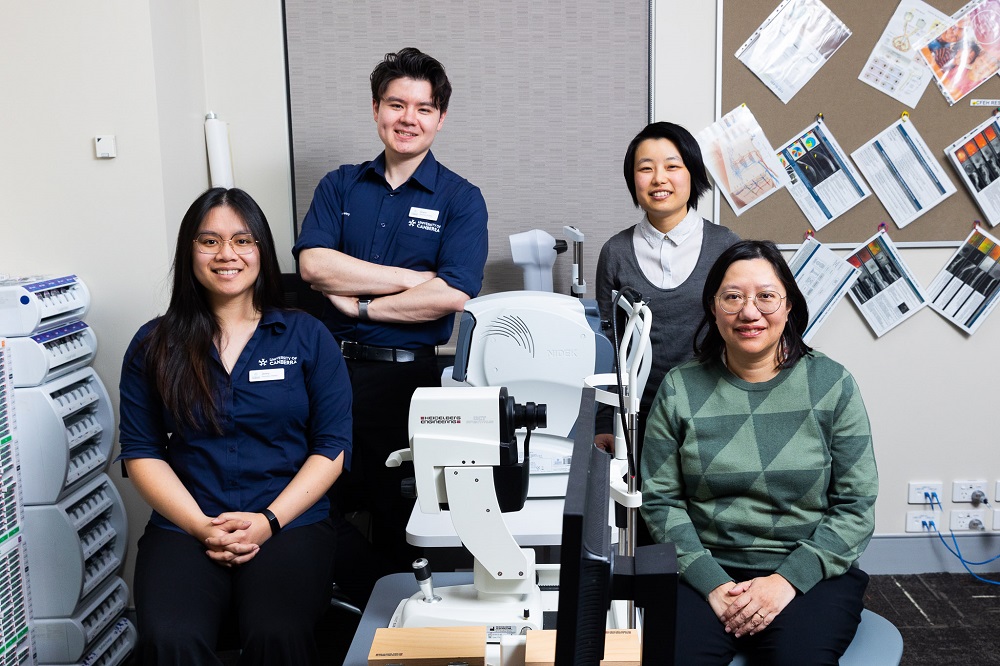UC Master of Optometry Students Investigate Cyclist Visibility in Twilight Testing Study
Two Master of Optometry students at the University of Canberra have carried out the second phase of a cyclist visibility study, to determine what visibility aids are the most effective in twilight conditions.
Grant Baker and Jenny Nguyen conducted their part of the study over 20 days, after initial vision tests for participants who were stationed in a vehicle as the drivers.

Mr Baker volunteered to be the cyclist for the study, riding along a stretch of road and wearing different clothing each time – a white shirt, black shirt, high visibility and reflective vest, and the high visibility reflective vest with additional flashing LED lights.
“Most studies only look at daytime and nighttime, and while twilight is a very limited time frame, it’s usually peak hour traffic with most people heading home from work,” Mr Baker said.
“Many drivers don’t turn their headlights on during this time, and the natural light is fading, so we were trying to find out how that fading light affects the visibility of cyclists.”
Ms Nguyen oversaw the participants who were sitting in a stationary car at the end of a stretch of road with the head lights turned off.
“Grant would be riding back and forth, and I would ask the participant to tell me when they saw him in their periphery. Then Grant would stop and drop a marker at that point,” she said.
“We had over 20 participants who observed Grant in each of the different clothing configurations.”
The students were supervised by Discipline Lead in Optometry and Vision Science Dr Mei Ying Boon and Assistant Professor in Optometry and Vision Science Dr Myra Leung. They say the students in each phase of the study brought unique insights that made it a well-rounded project.
“Having student involvement is really energising because they come to the project with great ideas,” Dr Boon said.
“We were originally going to conduct the study with pedestrian observers, but Jenny suggested we use a car to make it more realistic in terms of road sharing and visibility.”
Dr Leung said the students demonstrated exceptional problem-solving skills throughout the process.
“They were enthusiastic and put so much effort into finding participants and coming out each evening before sunset for the hour of twilight to do the testing,” she said.
The study has been submitted for peer review and the students hope the research findings will go on to have a real-world impact through encouraging cyclists to invest in the right clothing and equipment for sharing the road with motorists.

